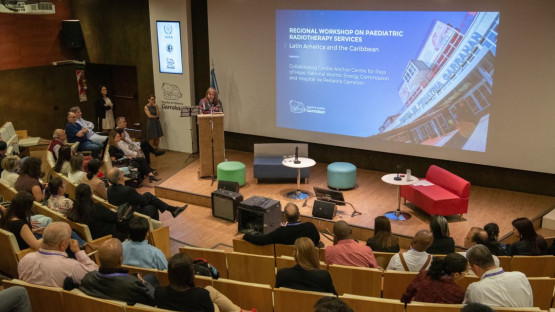The IAEA’s Rays of Hope Anchor Centre in Argentina held its first-ever capacity building event in November – facilitating the development of a roadmap that will help to strengthen paediatric radiotherapy services across Latin America and the Caribbean. The event also led to the creation of a regional network for knowledge exchange and expert support. Capacity building is a key element of the IAEA’s Rays of Hope: Cancer Care for All initiative that aims to expand access to radiation medicine where it is needed most.
“The event with the Comisión Nacional de Energía Atómica (CNEA) is a shining example of the capacity building support that is possible through regional cooperation via Anchor Centres,” said May Abdel Wahab, Director of the IAEA Division of Human Health. “By providing targeted assistance to neighbouring countries in key areas such as education, training, research, innovation and quality assurance, Anchor Centres promise an enduring impact for Rays of Hope.”
As capacity building and knowledge hubs central to the initiative’s sustainability, Anchor Centres are chosen because of their history of collaboration with the IAEA; deep technical expertise; long-term commitment; and robust governance and medical infrastructure, among other criteria. These Centres play a pivotal role in enhancing cancer care by creating opportunities for advancement. In that vein, CNEA and its associated institutes – one of eleven Anchor Centres globally and the only such Centre in Latin America and the Caribbean region currently – organized a workshop in Buenos Aires in November 2024 on the status of the region’s paediatric radiotherapy services.
Despite radiation oncology being an essential component of the multidisciplinary cancer care that paediatric patients should receive, access to high-quality radiotherapy continues to be limited in low- and middle-income countries, where more than 90 per cent of children with cancer reside. This disparity contributes to lower survival rates that are at most estimated to be 20 to 30 per cent in these settings. Within high-income countries on the other hand, more than 80 per cent of children survive cancer.









